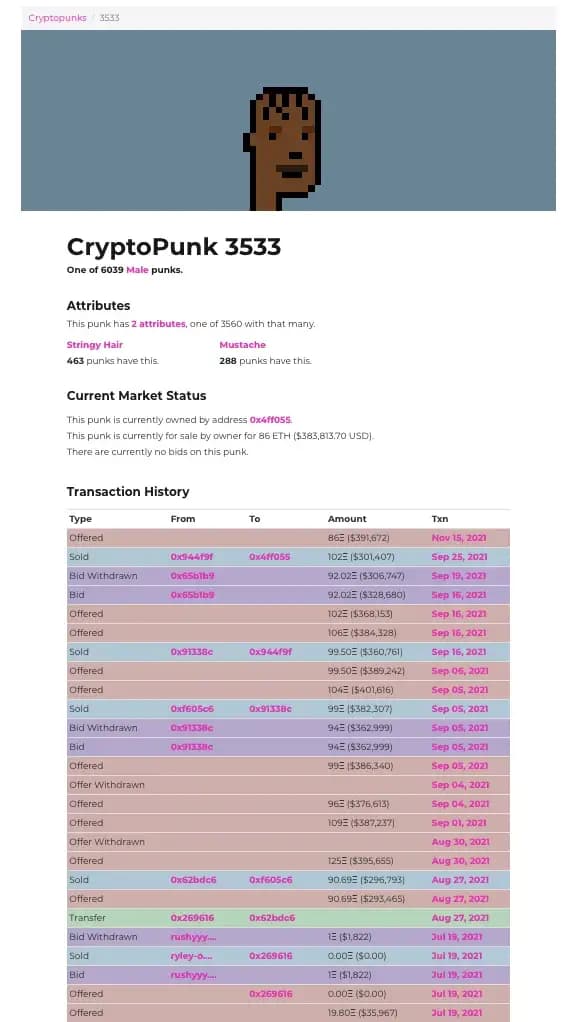How will NFT's change the food and beverage industry?
Web 3.0, the revolution brought about by decentralisation and cryptocurrency is revolutionising finance, gaming, and art.
The underlying technology solves a multitude of problems — I'm most interested in how this technology, particularly NFT's will change the way we interact with food and wine, and how we bridge tangible, perishable assets and the metaverse.
What food and beverage problems can it solve?
Based on off the cuff conversations with friends in the food and beverage industry, I heard a few problems related to quality, authenticity, provenance and purchasing difficulty over and over. I believe that the advancements in Web 3.0 including NFT's can be the technology platform for solving these problems.
In these first blog posts, I'll describe the problems, what NFT's are, and the customer interviews helping to form my next solution landscape.
Firstly, what's an NFT?
NFT's are digital tokens that represent the ownership of an assetSome of us are familiar with NFT's in the realm of digital artworks, especially after Beeple's NFT (opens in a new tab) was sold for $69 million (US) and CryptoPunk's pixelated characters (opens in a new tab) are fetching millions each.
NFT's properties include
Ownership: NFT's are digital tokens representing ownership, it's linked directly to the blockchain. The blockchain is a public decentralised ledger of information, meaning no one organisation controls or has “back-end” access to update information. The NFT serves as proof of ownership both past and present and can only have 1 official owner.
Authenticity and Uniqueness: The NFT is authentic & unique. Similar to ownership, the NFT uses the blockchain, owners can verify authenticity by tracing the sales, transfers, and original owner of the NFT to prove authenticity.
You can trace the transaction history of every NFT on their respective marketplaces, for example, let's take a look at a famous CryptoPunk such as Larvalabs CryptoPunk 3533 (opens in a new tab), below:

Note the transaction history above, the type of transaction, where it's been, where it's going, and the dates.
Decentralized: NFT's linked to a blockchain like Ethereum have no centralized authority or control — The blockchain isn't owned by an entity like Google or Microsoft, it's run by a distributed network of computers that verify transactions.
Any user can interact with the blockchain, in the case of NFT's, artists and producers can interact directly with their customers, eliminating middlemen & opening a channel directly with customers.
Immutable: The NFT linked to the blockchain is immutable & cannot be altered or updated by a central authority. Transaction price, dates, and owner information is available forever.
Smart: When an NFT is “minted” (created for the first time), it's created through a “smart contract” which manages the transferability of the asset. Rules such as a commission to the creator can be written in the smart contract so that a percentage of the selling price is to be sent to the creator for each transaction.
Ability to display & search: Blockchain data from most blockchains is publicly available, websites such as gallery.so connect to your wallet address (similar to owning something with your email address) to display your assets. Here's an impressive example (opens in a new tab) from Kevin Rose (opens in a new tab).
In this case, the NFT and Owner both have addresses, both can be searched and found, helping users track down assets over time.
How does this relate to food and wine?
Ownership and provenance are important for goods such as expensive bottle of wine or a can of powdered milk. Wine auction houses receive bottles from sellers needing to trust the sellers that their bottle is authentic and with good provenance, having spent its years at an optimal temperature and humidity. In 2006, the famous Rudy Kurniawan was charged with wine fraud (opens in a new tab) for counterfeit bottles, but counterfeit bottles only represent the tip of the iceberg. Buying a damaged wine (opens in a new tab) from an auction house can yield the same disappointing results.
NFT's provide industry a simple mechanism to identify, track and trade physical goods
Authenticity: In 2008, 300,000 babies in China were poisoned (opens in a new tab) by a toxic baby milk formula. More than 12 years later, baby milk formulas from Australia and Europe are still thriving with little to no consumer trust for Chinese products.
How can an item's authenticity be verified?
Decentralized: Laurent Ponsot, arguably one of the worlds most famous winemakers who lead investigations into Rudy Kurniawan's fake wine operation invests in and incubates anti-counterfeit wine tech (opens in a new tab). Whilst the technology is revolutionary, it is limited to their ecosystem, information is closed and hence the value is centralized to 1 organization.
Having items available on the blockchain public ledger enables any company system to integrate with, and any user to interact with and store information.
Use Case
Imagine, for every can of milk powder produced, an NFT asset directly related to the can is created. A large chemist in Australia purchases pallets of milk powder and ownership of each related asset is transferred through the blockchain. Cans are then sold and sent from Australia to China by individuals and received by the end-users who can then verify the trace and authenticity. If I'm a new Mother or Father in China searching for milk powder, I could search the public blockchain for recent milk powder transactions or a public website to find users with authentic stock and bid straight through the blockchain with the native token.
In the above example, the milk powder producers, the chemists and the end-users can all have different applications interfacing with a public blockchain and end-user sales can verify authentic P2P sales.
Thanks for reading. I'd love to hear your thoughts on the industry, feel free to write to DM me on twitter to continue the conversation @0xsamp